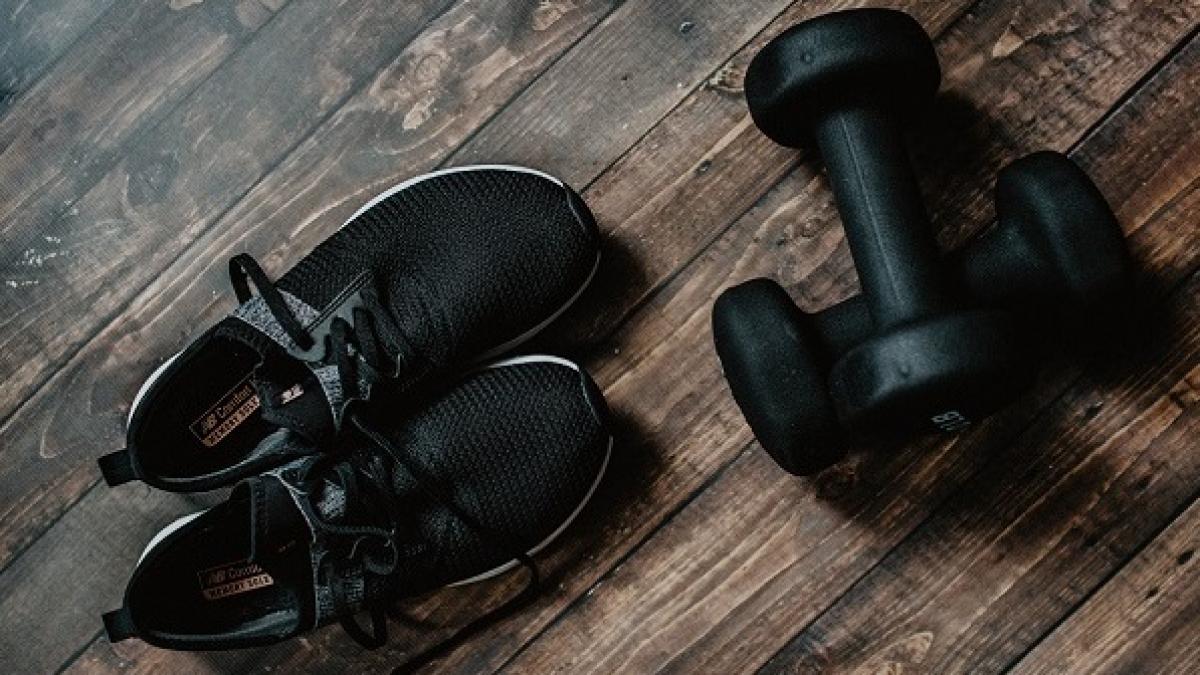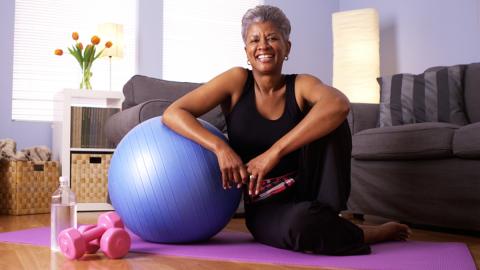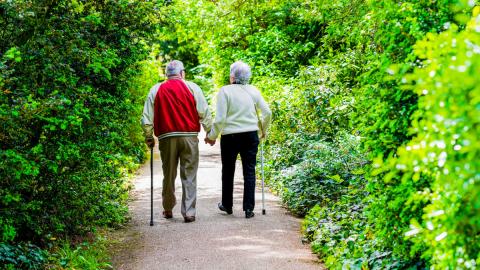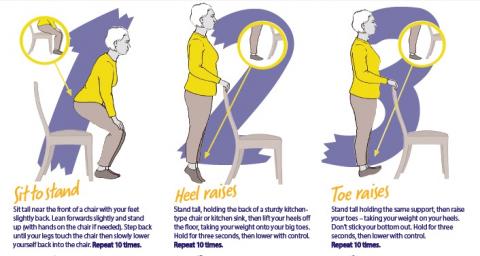The Centre for Ageing Better's Jess Kuehne talks about how exercise to improve muscle and bone strength can help reduce your risk of developing health problems later in life.

What’s one of the things you fear most about growing older? Developing a disability? Not being able to get out and about anymore? Needing help around the home? Not being able to wash or dress yourself? Falling and breaking a hip?
We know that loss of muscle strength as we age is closely linked to all of the above. The good news is that losing your strength – and the functional ability that comes with it – as you age isn’t inevitable. Undertaking exercises to strengthen your bones and muscles and improve your balance are very effective for reducing your risk of developing some of these health problems. In addition, these kinds of exercises can also help you maintain your ability to do everyday tasks like eating, bathing or using the stairs, even if your health worsens or you develop a disability.
The bad news is that currently, few people are doing enough of this kind of exercise – so it is really exciting to see the CSP undertaking a new project to find the best ways to promote the benefits of maintaining and improving muscle strength to people visiting their physiotherapist.
From racket sports to resistance training, there’s a beneficial activity for everyone
The importance of muscle strength and balance was highlighted in the new Chief Medical Officers’ guidelines on physical activity released just a few weeks ago. The guidelines recommend that we do something to build our strength to keep our muscles, bones and joints strong at least twice a week. They also recommend that older adults twice weekly do activities to improve their balance.
The Centre for Ageing Better last year funded an evidence review that specifically looked at which activities are the most effective for improving muscle and bone strength and balance. Activities that have the most benefit for muscle and bone strengthening included ball games, racket sports, dancing and resistance training (using weights, for example). It also looked at which activities were more appropriate for individuals with certain health conditions, for example those who have osteoporosis or have suffered a fracture.
Yet even though we know how important strength and balance are, we also know that very few people meet the official guidelines for activities that can improve them. There are a number of barriers that stop people from participating in these sorts of exercises. These include things like being in poor health, fear of experiencing pain or discomfort, feeling socially awkward, lacking confidence or support, or needing professional instruction.
The role of physiotherapists in promoting physical activity
So how can we get more people to take up these sorts of activities? Physiotherapists have an important role to play in supporting people with health conditions to take up more strengthening activities and overcoming many of the above barriers.
One of the key recommendations that came out of the evidence review the Centre for Ageing Better funded was that public messages on muscle and bone strengthening and balance improvement need to be tested and developed for different segments of the population.
Now we’re really looking forward to working with CSP and Sport England to take this forward with an exciting initiative to explore people’s perceptions of the importance of regular strength and balance activities, and create messaging and approaches to help people get enough of these kinds of exercise. This project will help physiotherapists promote the benefits of these kinds of exercise, and in turn we will work to see how the learning from this project can be spread to other health and exercise professionals.

Jess Kuehne is senior programme manager (healthy ageing) at the Centre for Ageing Better
Find Out More
Number of subscribers: 3






































